Finding the best shampoo for your hair type is essential for keeping your hair healthy and vibrant. With so many options available, it can be difficult to select the best one. However, by understanding your hair type and its unique demands, you may choose a shampoo that addresses your concerns while also promoting ideal hair health. Identifying your hair type, assessing your hair concerns, reading the product labels, understanding shampoo formulations, considering additional hair needs, seeking recommendations, trial, and error, and maintaining a hair care routine are all steps to finding the perfect shampoo for your hair type. By following these guidelines and paying attention to your hair's specific needs, you will be well on your way to finding the best shampoo for your hair type. Reassess your hair's condition on a regular basis and adjust your shampoo as needed to keep your locks healthy and beautiful.
Understanding the Importance of Choosing the Right Shampoo
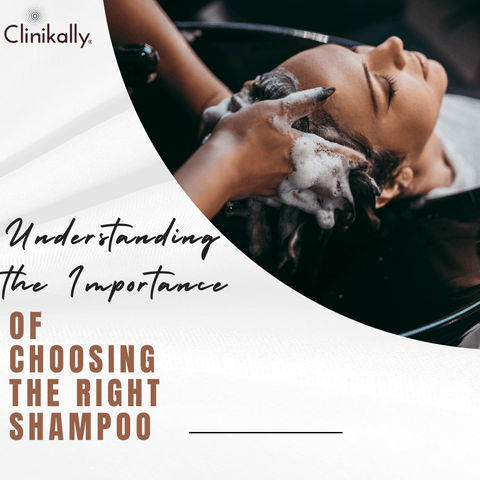
Choosing the appropriate shampoo is critical for preserving your hair's health, look, and general condition. Cleansing and hygiene, hair and scalp health, targeted solutions, preserving hair color, styling support, scalp care, and overall hair appearance are all essential reasons to choose the right shampoo. Keep in mind that everyone's hair is different, and what works for one person might not work for another. Finding the best shampoo for your hair may take some trial and error. Pay attention to your hair's individual needs and change your shampoo selection accordingly for the best results. To maintain maximum hair health, examine your hair's state on a regular basis and adjust your wash routine as needed.
Why Your Shampoo Matters
The shampoo is useful for various reasons. Hair and scalp health, cleansing and cleanliness, hair texture, and appearance, keeping hair color, scalp condition, targeted hair concerns, and personalized hair care are all important factors to consider when selecting a shampoo. While shampoo selection is vital, it is also critical to adhere to a thorough hair care routine that includes conditioning, suitable styling techniques, and other beneficial practices. A holistic approach to hair care will produce the best results and assist you in maintaining healthy, beautiful hair.
How the Right Shampoo Can Transform Your Hair
The right shampoo has the ability to transform your hair in a variety of ways, notably improving its appearance, health, and manageability. Here's how the right shampoo can do its magic:
-
Hair Texture Improvement: A well-formulated shampoo can improve the texture of your hair. Using a shampoo designed for your specific hair type, whether fine, limp hair or thick, coarse hair, can add body, smoothness, or control, depending on your needs. With regular use, you will notice a difference in the overall texture of your hair.
-
Enhanced Shine and Lustre: Shampoos containing botanical extracts, oils, or proteins can nourish and moisturize your hair, resulting in increased shine and lustre. These shampoos aid in the restoration and sealing of the hair cuticles, allowing light to reflect off the strands and creating a glossy and healthy appearance.
-
Frizz Control: If you have frizzy hair, selecting the right shampoo can make a big difference. Anti-frizz shampoos frequently contain smoothing ingredients like silicones or oils that help tame frizz and flyaways, resulting in a smoother and more manageable hair surface.
-
Hydration and Moisture: A shampoo that provides deep hydration and moisture to dry and damaged hair can be extremely beneficial. Look for shampoos that contain ingredients like shea butter, argan oil, or glycerin, which help replenish moisture and restore the hair's natural hydration balance. The use of such shampoos on a regular basis can result in softer, smoother, and healthier-looking hair.
-
Scalp Health and Balance: Promoting optimal hair growth and overall hair health requires a healthy scalp. Shampoos designed to address scalp issues such as dryness, itchiness, or excess oiliness can restore scalp balance, improving the condition of both the scalp and hair. As a result, you may experience less scalp irritation, a cleaner scalp environment, and healthier hair growth.You can use dermatologists recommended Hair grow serum.
-
Color Protection: Color-treated hair shampoos help preserve and protect the color of your hair. Shampoos designed specifically for color-treated hair help preserve and protect your hair's color. These shampoos are gentle and contain no color-stripping sulphates. They aid in the reduction of color fading and the preservation of the vibrancy and longevity of your hair color, ensuring that your dyed or highlighted hair looks vibrant and fresh.
-
Addressing Specific Hair Concerns: Shampoos that target specific hair concerns such as dandruff, hair loss, or thinning hair can make a significant difference in addressing these issues. They frequently contain active ingredients or specialized formulations that aid in the relief of scalp conditions, the promotion of hair growth, or the strengthening of hair strands.
Factors to Consider When Selecting a Shampoo
There are various crucial elements to consider while choosing shampoo. Considering these aspects will assist you in selecting a shampoo that is appropriate for your hair type, addresses your unique concerns, and promotes optimal hair health. Hair type, scalp condition, specific concerns, substances, ph balance, aroma, brand reputation, reviews, and trial and error are all important aspects to consider. Remember that what works for someone else may not work for you because everyone's hair is different. Pay attention to how your hair and scalp react to different shampoos and change your selection accordingly. To keep your hair healthy and beautiful, examine its state on a regular basis and adjust your shampoo routine as needed.
Identifying Your Hair Type and Concerns
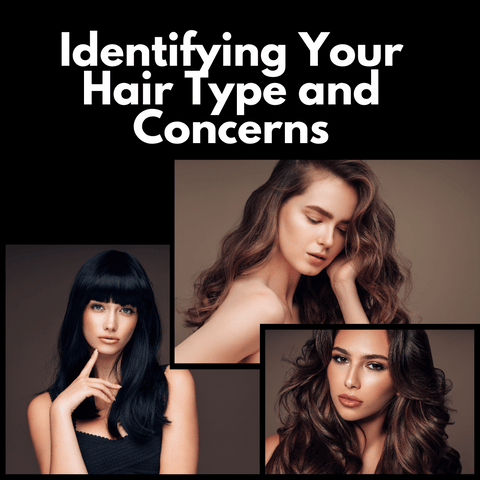
Identifying your hair type and concerns is an important step in choosing the best shampoo. Here's how to figure out your hair type and pinpoint your specific concerns:
-
Hair Type:
-
Oily Hair: Oily hair appears greasy and may necessitate frequent washing. It is frequently distinguished by an oil buildup at the roots.
-
Dry Hair: Dry hair lacks moisture and can appear dull, brittle, and frizzy. It may be rough to the touch and more prone to damage.
-
Normal Hair: Normal hair is well-balanced, neither too oily nor too dry. It has a healthy sheen, and good elasticity, and is generally simple to care for.
-
Combination Hair: Combination hair has both oily and dry characteristics. The scalp may be oily, but the hair ends may be dry or damaged.
-
Curly Hair: Curly hair has a distinct pattern that can range from loose waves to tight coils. It is more prone to frizz and requires special care to keep its shape and moisture.
-
Straight Hair: Straight hair lacks natural curl or wave and can appear sleek and smooth.
-
Fine Hair: Fine hair refers to individual strands that are thin and delicate. It may lack volume and appear flat, necessitating the use of products that provide lift and support.
-
Thick Hair: Thick hair refers to a higher density of hair strands on the scalp. It can be coarse, necessitating the use of products that aid in the management and control of its volume.
-
Specific Concerns:
Identify any specific concerns or issues you may have with your hair, in addition to your hair type, such as:
-
Dandruff: If you have a flaky scalp, you may require a shampoo designed specifically to treat dandruff and soothe the scalp.
-
Frizz: If your hair is prone to frizz and lacks smoothness, look for shampoos with anti-frizz or smoothing properties.
-
Color-Treated Hair: If you have dyed or chemically treated hair, use shampoos that are specifically designed to prevent fading and maintain vibrancy.
-
Damaged hair: If your hair has been damaged by heat styling, chemical treatments, or environmental factors, consider shampoos that repair and strengthen the hair.
-
Hair Loss or Thinning: If you have hair loss or thinning, choose shampoos that promote hair growth and scalp health.
-
Scalp Sensitivity: Choose shampoos that are gentle and free of harsh chemicals or fragrances if you have a sensitive scalp prone to irritation or allergies.
Determining Your Hair Texture
Determining your hair texture is an important step in understanding your hair and selecting the right products, including shampoo. Here's how to figure out your hair texture:
-
Strand Thickness: Examine the thickness of a single strand of your hair. Hold it up to a piece of thread or a known reference, such as a sewing thread.
-
Fine Hair: If your strands are thinner than a thread or are barely visible, you most likely have fine hair. Fine hair strands are frequently delicate and easily weighed down.
-
Medium Hair: You have medium hair if your strands are the same thickness as the thread. This hair texture is considered average, ranging from fine to coarse.
-
Coarse Hair: If your strand is thicker than the thread or visibly thicker than average, you have coarse hair. Coarse hair strands are more durable and resistant to damage.
-
Hair Density: Examine the number of hair strands on your scalp. This can help you determine whether your hair density is low, medium, or high.
-
Low Density: If your scalp can be seen even when your hair is dry and styled, you have low hair density. Hair may appear sparse or thin.
-
Medium Density: If your scalp is partially visible but not overly so, you have medium hair density. This is known as the average density.
-
High Density: If your scalp is not visible even when your hair is dry and styled, you most likely have dense hair. Hair may appear thick and plentiful.
-
Hair Porosity: Hair porosity refers to how well your hair absorbs and retains moisture. Understanding your hair's porosity can assist you in selecting the best hydration and moisture balance products.
-
High Porosity: If your hair absorbs water and products quickly and feels dry or frizzy, it may be high porosity. Moisture can easily escape through gaps or lifted cuticles in high-porosity hair.
-
Medium Porosity: If your hair retains moisture well and has a healthy sheen, it is most likely medium porosity. This is thought to be the ideal porosity level.
-
Low Porosity: If your hair takes longer to absorb water and products and feels resistant to moisture, you may have low porosity hair. Low porosity hair has tightly closed cuticles that make moisture penetration more difficult.
Common Hair Concerns and Their Solutions
Common hair concerns differ from person to person, but there are some common issues that many people face. Here are some common hair issues and potential solutions:
-
Dry and Dehydrated Hair:
-
Solution: Use moisturizing shampoos and conditioners that hydrate and nourish the hair. Look for ingredients that help retain moisture, such as shea butter, argan oil, or glycerin. Regular deep conditioning treatments, as well as avoiding overheated styling, can help combat dryness.
-
Frizzy Hair:
-
Solution: Use anti-frizz shampoos and conditioners that smooth the cuticles of your hair. Look for frizz-controlling ingredients such as silicone or natural oils (such as argan oil or coconut oil). Avoid over-washing and gently detangle wet hair with a wide-toothed comb or your fingers.
-
Dull or Lackluster Hair:
-
Solution: Use clarifying shampoos on a regular basis to remove product buildup that can cause hair to look dull. Use shine-enhancing shampoos or conditioners that restore shine by containing keratin or natural extracts. Rinse your hair frequently with cool water to seal the cuticles and increase shine.
-
Thin or Limp Hair:
-
Solution: Look for shampoos and conditioners that give the hair body and lift. Pick formulations that will not make the hair feel heavy. The appearance of thicker hair can also be aided by styling products like root-lifting sprays and volumizing mousse. Avoid using heavy, oil-based products that might give your hair a greasy appearance.
-
Dandruff or Flaky Scalp:
-
Solution: Use anti-dandruff shampoos containing active ingredients such as zinc pyrithione, ketoconazole, or salicylic acid. These ingredients aid in the control of dandruff-causing fungus and the reduction of flaking. Massage the shampoo into the scalp for a few minutes, then thoroughly rinse. Keep your scalp clean and avoid excessive scalp dryness or oiliness.
-
Hair Breakage or Damage:
-
Solution: Use shampoos and conditioners designed specifically for damaged or weakened hair. Look for ingredients that help strengthen and repair the hair, such as keratin, hydrolyzed proteins, or ceramides. Limit the use of heat styling tools, protect your hair from sun and environmental damage, and avoid tight hairstyles that can cause breakage. Trims to remove split ends on a regular basis are also beneficial.
-
Color-Treated Hair Fading:
-
Solution: Use color-safe shampoos and conditioners that are specially formulated to preserve and protect hair colour. Choose sulfate-free products that are gentler on the hair and reduce colour fading. Limit your exposure to direct sunlight, chlorinated water, and heat styling tools, as these can all contribute to colour fading. Regular touch-ups and the use of color-enhancing products can also aid in the preservation of vibrancy.
Assessing Your Scalp's Condition
Assessing the condition of your scalp is critical for understanding its health and addressing any specific concerns. Here are some important factors to consider when assessing the condition of your scalp:
-
Dryness: Check to see if your scalp is dry and lacking in moisture. Itching, flakiness, or a tight or uncomfortable sensation are all symptoms of a dry scalp. Dryness can be caused by a variety of factors, including environmental conditions, over-shampooing, and the use of harsh hair products.
-
Oiliness: Determine whether your scalp becomes oily quickly. A greasy scalp may have visible oil buildup and necessitate frequent washing. Excess oil production can be caused by overactive sebaceous glands, which can be influenced by hormonal factors, genetics, or an inadequate hair care routine.
-
Flakiness: Check your scalp for flakes, which can indicate dandruff or a dry scalp. Dandruff is defined by white or yellowish flakes on the scalp, which may be accompanied by irritation or itching. It can be caused by Malassezia, a yeast-like fungus, hormonal imbalances, stress, or certain skin conditions.
-
Irritation or Sensitivity: Determine whether your scalp is sensitive or easily irritated. Redness, tenderness, or increased sensitivity to hair care products are all symptoms of scalp sensitivity. Sensitivity can be caused by allergies, irritants in hair products, or underlying skin conditions such as eczema or psoriasis.
-
Scalp Odor: Check to see if your scalp has an unpleasant odor. An unpleasant odor on the scalp may indicate a scalp condition such as seborrheic dermatitis or bacterial overgrowth. Poor hygiene, excessive sweating, or the use of heavy hair products that have not been properly cleansed can all contribute to scalp odor.
-
Scalp Texture: Examine the texture of your scalp to determine whether it is balanced, rough, bumpy, or inflamed. The texture of a healthy scalp is usually smooth. Roughness, bumps, or inflammation of the scalp can indicate underlying scalp conditions or imbalances.
The Best Shampoos for Different Hair Types
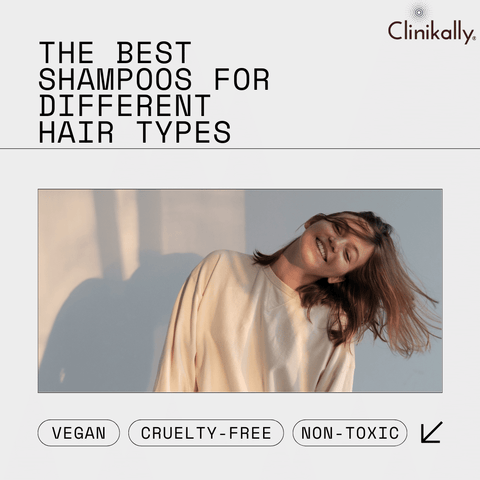
Choosing the correct shampoo for your hair type will improve its health, look, and manageability significantly. The best shampoo for oily hair, the best shampoo for dry hair, the best shampoo for normal hair, the best shampoo for curly hair, the best shampoo for straight hair, the best shampoo for fine hair, the best shampoo for thick hair, and the best shampoo for color-treated hair are some recommendations. Remember that these are generic suggestions and that individual preferences and unique concerns may differ. Consider your hair's specific needs and try out several shampoos to find the one that works best for you. In order to keep healthy, beautiful hair, it is also recommended that you use a proper conditioner and include other hair care practices.
Shampoos for Dry and Damaged Hair
The right shampoo can help restore moisture, repair damage, and improve overall hair health if you have dry, damaged hair. Here are some shampoos made specifically for dry and damaged hair:
-
Moisturizing and hydrating shampoos:
-
Look for shampoos with moisturizing ingredients such as argan oil, shea butter, coconut oil, or glycerin. These ingredients aid in the replenishment of moisture, the restoration of hydration balance, and the nourishment of dry and damaged hair.
-
Repairing and Strengthening Shampoos:
-
Choose shampoos that are designed to repair and strengthen damaged hair. Look for ingredients like keratin, protein complexes, or amino acids that help rebuild and fortify the hair strands.
-
Restorative and Nourishing Shampoos:
-
Shampoos that provide deep nourishment and restore vitality to dry and damaged hair should be used. Look for formulas that include natural extracts, vitamins, or oils that help to replenish moisture, improve shine, and promote hair health.
-
Sulfate-Free Shampoos:
-
Consider sulfate-free shampoos, which are gentler and less likely to strip natural oils from the hair. Sulphates can cause dryness and further damage in some people.
Shampoos for Oily Hair and Scalp
Choosing the right shampoo for oily hair and scalp can help control excess oil production, remove buildup, and maintain a balanced scalp. Here are some shampoos that are specifically designed for oily hair and scalp:
-
Clarifying Shampoos:
-
Clarifying shampoos are intended to cleanse the scalp thoroughly and remove excess oil, product buildup, and impurities. They clean thoroughly without robbing the hair of essential moisture.
-
Balancing Shampoos:
-
Balancing shampoos aid in the regulation of oil production while also promoting a healthy scalp environment. They cleanse gently and prevent excessive oiliness without drying out the hair.
-
Tea Tree Oil Shampoos:
-
Tea tree oil shampoos can be beneficial for oily hair and scalp due to their natural astringent and antimicrobial properties. Tea tree oil regulates oil production, soothes the scalp, and fosters a healthy environment.
-
Volumizing Shampoos:
-
Oily hair can benefit from volumizing shampoos because they add body and lift to the roots. They contribute to the appearance of greasiness while creating a lightweight, airy texture.
Shampoos for Fine and Limp Hair
If you have fine or limp hair, the right shampoo can add volume, lift, and texture to make it appear fuller and more voluminous. Here are some shampoos that are specifically designed for fine and limp hair:
-
Volumizing Shampoos:
-
Volumizing shampoos are designed to give fine hair body and lift, giving the appearance of fuller strands. They usually contain ingredients that plump up the hair shaft and add structure.
-
Thickening Shampoos:
-
Thickening shampoos increase the diameter of individual hair strands, giving them the appearance of being thicker and more substantial. These shampoos frequently contain ingredients that coat the hair shaft to increase thickness and texture.
-
Weightless or Lightweight Shampoos:
-
Look for shampoos that are lightweight or have been specially formulated to be weightless. These shampoos cleanse the hair without weighing it down, giving it a clean, airy feel and encouraging root volume.
-
Root-Lifting Shampoos:
-
Root-lifting shampoos target the roots specifically to provide lift and support. They aid in the creation and maintenance of volume by concentrating on the areas where fine hair tends to flatten.
Targeted Solutions for Specific Hair Concerns
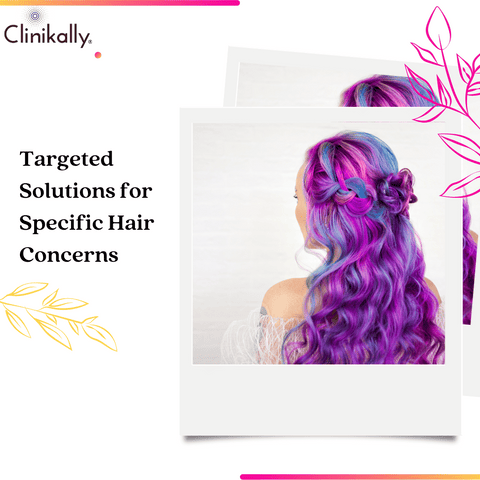
Here are some targeted solutions for specific hair concerns, as well as some recommended products:
-
Dandruff: Look for anti-dandruff shampoos with active ingredients like zinc pyrithione, ketoconazole, or salicylic acid to control the fungus that causes dandruff and reduce flaking.
-
Hair Loss or Thinning: Use shampoos that promote hair growth, strengthen hair follicles, and reduce hair loss. Look for components like biotin, caffeine, or minoxidil.
-
Frizz and Flyaways: Choose smoothing shampoos that help tame frizz and provide moisture to control flyaways. Look for ingredients that smooth the hair cuticles, such as silicone or natural oils.
-
Color-Treated Hair Fading: Opt for color-safe shampoos that are specifically formulated to preserve and protect hair color. Look for sulfate-free options that are gentle on the hair and reduce colour fading.
-
Damaged and Overprocessed Hair: Use shampoos that focus on repairing and strengthening damaged hair. Look for ingredients like keratin, protein complexes, or amino acids that help rebuild and fortify the hair.
-
Scalp Sensitivity and Irritation: Choose gentle, hypoallergenic shampoos that soothe the scalp and minimize irritation. Look for products that are free from harsh chemicals or fragrances.
-
Lack of Volume and Flat Hair: Look for volumizing shampoos that add body and lift to the hair. These shampoos help create the appearance of fuller, more voluminous hair.
Remember that individual outcomes may vary, and finding the right product for your unique hair concern may require some trial and error. To attain the best results, follow up with an appropriate conditioner and incorporate other hair care practices such as regular deep conditioning treatments and protecting the hair from heat and environmental damage.
Repairing and Preventing Split Ends
Repairing and preventing split ends necessitates a combination of proper hair care practices and targeted products. Here are some strategies and products to help with split ends:
-
Regular Trimming: Trim your hair on a regular basis to prevent split ends. Aim for a haircut every 6-8 weeks to remove damaged ends and encourage healthier hair growth.
-
Gentle Hair Handling: Handle your hair gently to avoid breakage and further damage. Avoid rough towel drying, aggressive brushing, and use high-heat styling tools.
-
Avoid Excessive Heat: Heat styling tools such as flat irons, curling irons, and blow dryers can all contribute to split ends. Reduce their use or use heat-protectant products to protect your hair from overheating.
-
Hydrating and Nourishing Shampoos: Look for shampoos that hydrate and nourish your hair, as well as those that are specifically designed to repair split ends. These shampoos frequently contain ingredients such as keratin, argan oil, or silk proteins, which aid in the repair and strengthening of damaged hair.
-
Moisturizing Conditioners and Masks: Make use of conditioners that deeply hydrate and nourish your hair. Look for products that contain ingredients like shea butter, coconut oil, or avocado oil to restore moisture and improve the overall health of your hair.
-
Leave-In Treatments and Serums: Utilise serums or leave-in treatments made especially for split ends. These items aid in sealing the ends, adding more nutrition, and lessening the visual impact of split ends.
-
Protective Hairstyles: Opt for protective hairstyles that minimize friction and manipulation, reducing the chances of further splitting. Healthy hair can be encouraged, and ends can be protected with styles like braids, buns, and twists.
-
Satin or Silk Pillowcases: Use satin or silk pillowcases to reduce friction and hair damage while you sleep. These materials are kinder to your hair and aid in avoiding split ends brought on by rubbing your hair against rough pillowcases.
Controlling Frizz and Flyaways
The right hair care procedures, the right products, and the right styling techniques must be used in combination to control frizz and flyaways. The following techniques and products are suggested for taming frizz and flyaways:
-
Moisturizing and Hydrating Shampoos and Conditioners: Find shampoos and conditioners that hydrate and moisturize your hair. Frizz and flyaways are more common in dry hair. Choose products that contain ingredients like argan oil, shea butter, or glycerin to help nourish and smooth the hair.
-
Anti-Frizz Serums or Oils: After washing and conditioning your hair, apply anti-frizz serums or oils. These products aid in adding shine, controlling frizz, and smoothing the hair. Start with a small quantity and work it evenly through your hair, paying special attention to the ends and avoiding the roots.
-
Leave-In Conditioners: Use leave-in conditioners to give your hair additional moisture and defence. They can support daylong control of frizz and flyaways. Apply a small amount evenly throughout damp hair, paying special attention to the ends and frizz-prone regions.
-
Avoid Heat Styling and Hot Tools: Frizz and flyaways may be exacerbated by hot tools and heated styling methods. Avoid using them as much as you can, and choose air drying whenever you can. If you must use heat, protect your hair from harm and lessen frizz by spraying on a heat protectant.
-
Microfiber Towel or T-Shirt Drying: Use a microfiber towel or an old t-shirt instead of a standard towel to gently squeeze out the excess water from your hair. Regular towel friction can aggravate frizz. Microfiber towels and t-shirts absorb moisture without damaging the hair cuticles.
-
Wide-Toothed Comb or Detangling Brush: Use a wide-toothed comb or a detangling brush to minimize breakage and prevent further frizz. Begin detangling from the ends and work your way up to the roots, being careful not to pull or cause unnecessary friction.
-
Humidity-Resistant Hairsprays or Styling Products: Look for hairsprays or styling products that provide humidity resistance and frizz control. These items can help you keep your hair in place and prevent frizz from humidity or environmental factors.
Enhancing Natural Curls and Waves
Following a hair care routine that nourishes and defines your natural texture is essential for enhancing natural curls and waves. Here are some tips and products to help you enhance your natural curls and waves:
-
Moisturizing Shampoos and Conditioners:
-
Use moisturizing shampoos and conditioners to keep your hair hydrated. Because curly and wavy hair tends to be drier, moisture is essential for preserving and defining your natural texture.
-
Look for products that contain ingredients like shea butter, coconut oil, or aloe vera to help nourish and hydrate your hair.
-
Leave-In Conditioners:
-
Use leave-in conditioners on damp hair to add additional moisture, define curls, and lessen frizz. These items aid in preserving and enhancing your natural curl pattern.
-
Pick leave-in conditioners that will not weigh down your hair and are lightweight.
-
Curl-Enhancing Creams or Gels:
-
Use curl-enhancing creams or gels to give your curls or waves hold, definition, and control. These items improve the natural texture and shape of your hair while reducing frizz.
-
Apply the cream or gel to damp hair and scrunch it upward to promote the formation of curls.
-
Diffusing:
-
Use a diffuser attachment when blow-drying your hair to accentuate any natural curls or waves you may have. The diffuser aids in even airflow distribution, which lessens frizz and maintains the natural texture of your hair.
-
Set your blow dryer to a low or medium heat setting, then scrunch your hair gently from the roots to the ends using the diffuser.
-
Plopping or Twisting:
-
Try "plopping" or "twisting" methods after washing your hair to accentuate your curls or waves.
-
Plopping: Place a cotton or microfiber towel on a flat surface. Flip your hair onto the towel, and gently wrap it up to resemble a turban. Allow it to sit for 15 to 30 minutes to help the curls form.
-
Twisting: Separate your damp hair into sections, and twist each section from roots to ends in a downward motion. Dry your hair naturally or with a diffuser.
-
Satin or Silk Pillowcases:
-
Use pillowcases made of silk or satin while you sleep to lessen friction and frizz. These materials are kinder to your hair and support the preservation of its natural curl pattern.
Specialized Shampoos for Unique Needs
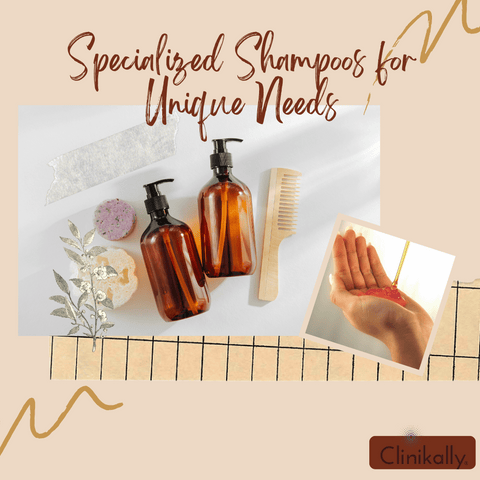
There are numerous options available for specialized shampoos for certain purposes. Sulfate-free shampoos, ph-balanced shampoos, scalp-soothing shampoos, dandruff management shampoos, clarifying shampoos, hard water shampoos, and post-swim or chlorine-removing shampoos are examples of specialized shampoos designed to address specific hair difficulties. Individual outcomes will vary, so it's always a good idea to visit with a professional stylist or trichologist to address specific difficulties and receive personalized recommendations.
Color-Safe Shampoos for Vibrant Hair
Use color-safe shampoos that have been specially formulated to protect and preserve the color if you want to keep your hair's color vibrant and long-lasting. Here are a few shampoos that are suggested as color-safe:
-
Sulfate-Free Shampoos: Shampoos without sulphates are gentler on hair that has received color treatment because they do not remove the colour or moisture. They contribute to the color's longer-lasting vibrancy and integrity.
-
Shampoos with a pH balance: Shampoos with a pH balance are necessary for color-treated hair in order to maintain the natural pH balance of the hair and scalp. They aid in the preservation of color and the prevention of color fading.
-
UV Protection Shampoos: Shampoos with UV protection shield the hair from UV rays, which can damage and fade the color. They offer an additional line of defence against outside influences that might make color-treated hair less vibrant.
-
Color-Enhancing Shampoos: Shampoos that intensify and enhance color in color-treated hair are made with this purpose in mind. They have color-depositing pigments that support reviving the hair color in between trips to the salon.
-
Gentle Cleansing Shampoos: Shampoos that are gentle on the hair and do not strip the color offer a gentle and non-stripping cleanse. They aid in cleaning up impurities without affecting the color vibrancy of the hair.
-
Professional Salon Brands: Many professional salon brands provide a wide range of color-safe shampoos that cater to different hair types and colors. These shampoos are frequently created with premium ingredients to safeguard and improve color-treated hair.
Gentle and Soothing Shampoos for Sensitive Scalp
For those with sensitive scalps, using gentle and soothing shampoos can help alleviate discomfort, reduce irritation, and maintain a healthy scalp. Here are some recommended shampoos for sensitive scalps:
-
Hypoallergenic Shampoos: The creation of hypoallergenic shampoos lowers the possibility of allergic reactions and scalp irritation. Because they do not contain harsh chemicals or everyday irritants, they are safe for scalps with sensitive skin.
-
Scalp-Soothing Shampoos: Scalp-soothing shampoos are designed to calm and alleviate discomfort associated with a sensitive or irritated scalp. They often contain ingredients like aloe vera, chamomile, or tea tree oil, which provide soothing properties.
-
Fragrance-Free Shampoos: Fragrances can sometimes trigger scalp sensitivity and irritation. Fragrance-free shampoos are formulated without added fragrances, reducing the likelihood of scalp reactions.
-
pH-Balanced Shampoos: pH-balanced shampoos help maintain the natural pH level of the scalp, which is crucial for a healthy scalp environment. They can be beneficial for individuals with sensitive scalps as they minimize potential irritation.
-
Oatmeal or Calming Shampoos: Oatmeal or calming shampoos can provide relief to sensitive scalps, reduce itching, and soothe irritation. These shampoos often contain ingredients like oatmeal extract or other calming botanicals.
-
Moisturizing and Nourishing Shampoos: Gentle shampoos that offer moisturizing and nourishing properties can help keep the scalp hydrated and reduce dryness, which can contribute to scalp sensitivity.
Remember to wash your hair with lukewarm water, since hot water might aggravate scalp sensitivity. Additionally, patch-testing new products before applying them to your entire scalp is essential to guarantee compatibility and minimize harmful responses. If scalp discomfort persists or worsens, see a dermatologist for additional assessment and treatment.
Clarifying Shampoos for Deep Cleansing
Clarifying shampoos are designed to provide a deep cleanse by removing product buildup, excess oil, hard water minerals, and impurities from the hair and scalp. They can help restore the hair's natural shine, improve scalp health, and prepare the hair for other treatments or styling. Here are some recommended clarifying shampoos for deep cleansing:
-
Sesderma Seskavel Hair Glycolic Shampoo: Protect oily hair and skin that have been subjected to chemical treatments with the Sesderma Seskavel Glycolic Shampoo. The peeling effect of the shampoo makes it feel extra soft on your scalp. It is also useful for soothing irritated scalps and enhancing treatments for peeling, seborrhea, and alopecia.
-
Ducray Anaphase+ Anti-Hair Loss Complement Shampoo: Effectively fight hair fall and prevent hair fall with the Ducray Anaphase+ Anti-Hair Loss Complement Shampoo. Its formula contains vitamins and nutrients that help preserve the strength and vitality of the hair while adding volume and shine.
-
Curatio Triclenz Hair Cleanser: Curatio Triclenz Hair Cleanser is a specially formulated hair cleanser that is gentle on the hair. It is a neutral cleanser that is effective in cleansing dry and dull hair. Triclenz shampoo lathers well to soften the cuticles; this restores the moisture of the hair, thus making it look shiny. Triclenz is a gentle cleanser that helps control hair fall and dandruff, thus maintaining overall hair health.
-
Aclaris Follicapil Shampoo: Revitalise your hair growth with the advanced formulation of Aclaris Follicapil Shampoo, which acts directly at the follicle. The shampoo is an effective way to reduce inflammation and increase hair growth. It helps rebalance the hair cycle and prevents excessive hair fall after just six weeks of regular use. It is suitable for use by both men and women.
Tips for an Effective Hair Care Routine
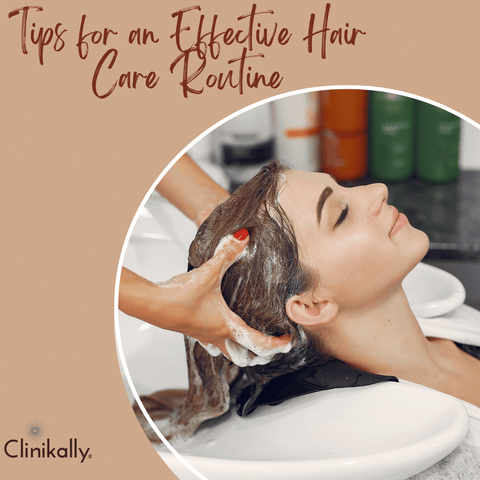
You must build an effective hair care routine in order to keep your hair healthy, nourished, and gorgeous. Identify your hair type and concerns, choose the right shampoo and conditioner, wash your hair appropriately, use lukewarm water, apply conditioner correctly, treat your scalp, protect your hair from heat, embrace air drying, limit chemical treatments, protect your hair from environmental factors, maintain a healthy lifestyle, and get regular trims. Remember that finding the products and practices that work best for your hair may need some trial and error. Be consistent and patient with your hair care routine, and get personalized assistance from a professional stylist if necessary.
















